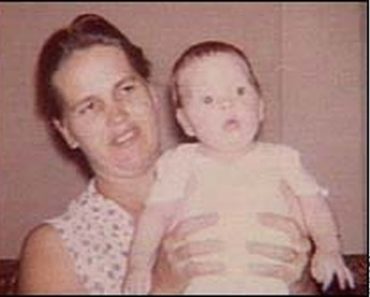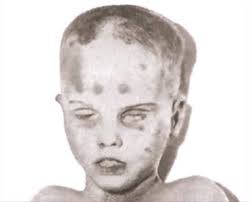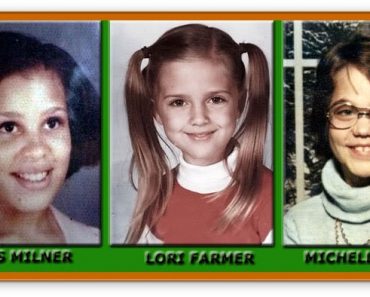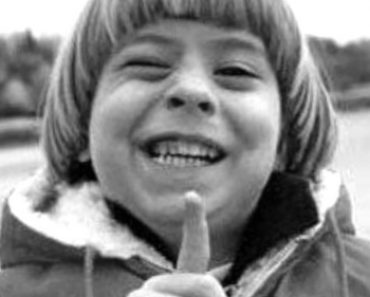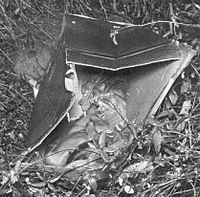
America’s Unknown Child
Boy in the Box Murder
Unsolved Cold Case
Discovered: February 25, 1957
The “Boy in the Box” is the name given to an unidentified murder victim, a little boy between the ages of 4-to 6, whose naked, battered body was found in a bassinet box in the Fox Chase section of Philadelphia, Pennsylvania, on February 25, 1957. He is also commonly called “America’s Unknown Child.”
His identity has never been discovered, and the case remains open.
Discovery of the Boy in the Box
In February 1957, the little boy’s body, wrapped in a plaid blanket, was found in the woods off Susquehanna Road in Fox Chase, Philadelphia. The naked body was inside a cardboard box which had once contained a bassinet of the kind sold by J. C. Penney.
The boy’s hair had been recently cropped, possibly after death, as clumps of hair clung to the body. There were signs of severe malnourishment, as well as surgical scars on the ankle and groin and an L-shaped scar under the chin.
The body was first discovered by a young man who was checking his muskrat traps. Fearing that the police would confiscate his traps, he did not report what he had found. A few days later, college student Frank Guthrum spotted a rabbit running into the underbrush. Knowing that there were animal traps in the area, he stopped his car to investigate and discovered the body. Guthrum, like the other young man, was reluctant to have any contact with the police, but he did report what he had found the following day, after hearing of the disappearance of Mary Jane Barker.
Investigation
The police received the report and opened an investigation on February 26, 1957. The dead boy’s fingerprints were taken and police at first were optimistic that he would soon be identified. However, no one ever came forward with any useful information.
The case attracted massive media attention in Philadelphia and the Delaware Valley. The Philadelphia Inquirer printed 400,000 flyers depicting the boy’s likeness, which were sent out and posted across the area and were included with every gas bill in Philadelphia.
The crime scene was combed over and over again by 270 police academy recruits, who discovered a man’s blue corduroy cap, a child’s scarf and a man’s white handkerchief with the letter “G” in the corner. The clues that led nowhere.
The police also distributed a post-mortem photograph of the boy fully dressed and in a seated position, as he may have looked in life, in the hope it might lead to a clue. Despite the publicity and sporadic interest throughout the years, the boy’s identity is still unknown. The case remains unsolved to this day.
On March 21, 2016, the National Center for Missing & Exploited Children released a forensic facial reconstruction of the victim and added him into their database.
In August 2018 Barbara Rae-Venter, the genetic genealogist who helped to identify the Golden State Killer using a DNA profiling technique, said that she was using the same method to try to identify the Boy in the Box. Amateur groups that use online databases, such as the Doe Network and Websleuths, have also tried to identity him.
Many tips and theories have been considered in the case. Although most of these have been dismissed, two theories have generated considerable interest among the police and media. They have each been extensively investigated.
Theories
The Foster Home Theory:
This theory concerns a foster home that was located approximately 1.5 miles from the site of the body.
In 1960, Remington Bristow, an employee of the medical examiner’s office who doggedly pursued the case until his death in 1993, contacted a New Jersey psychic, who told him to look for a house that matched the foster home. When the psychic was brought to the Philadelphia discovery site, she led Bristow directly to the foster home.
Upon attending an estate sale at the foster home, Bristow discovered a bassinet similar to the one sold at J. C. Penney. He also discovered blankets hanging on the clothesline that were similar to the one in which the boy’s body had been wrapped in when they discovered him. Bristow believed that the boy belonged to the stepdaughter of the man who ran the foster home, and that they disposed of his body so the stepdaughter would not be exposed as an unwed mother. He theorized that the boy’s death had been an accident. Despite this circumstantial evidence, the police were not able to find many definite links between the Boy in the Box and the foster family.
The Woman Known As Martha Theory:
Another theory was brought forward in February 2002 by a woman identified only as “Martha.” Police considered Martha’s story to be plausible but were troubled by her testimony, as she had a history of mental illness.
Martha claimed that her abusive mother had “purchased” the unknown boy (whose name was Jonathan) from his birth parents in the summer of 1954. Subsequently, the boy was subjected to extreme physical and sexual abuse for two and a half years. One evening at dinner, the boy vomited 14up his meal of baked beans and was given a severe beating, with his head slammed against the floor until he was semiconscious. He was given a bath, during which he died. These details matched information known only to the police, as the coroner had found that the boy’s stomach contained the remains of baked beans and that his fingers were water-wrinkled.
Martha’s mother apparently cut the boy’s long hair (accounting for the unprofessional haircut which police noted in their initial investigation) in an effort to conceal his identity. Martha’s mother then forced her to assist her in dumping the boy’s body in the Fox Chase area.
Martha said that as they were preparing to remove the boy’s body from the trunk of a car, a passing male motorist pulled alongside to inquire whether they needed help. Martha was ordered to stand in front of the car’s license plate to shield it from view while her mother convinced the would-be good samaritan that there was no problem. The man eventually drove off.
This story corroborated confidential testimony given by a male witness in 1957, who said that the body had been placed in a box previously discarded at the scene.
In spite of the outward plausibility of Martha’s tale, investigators were unable to verify her story. Neighbors, who had access to Martha’s mother’s home during the stated time period, denied that there had ever been a little boy living there. Reluctantly, Martha’s claims were dismissed.
America’s Unknown Child
The Boy in the Box was originally buried in a potter’s field. In 1998, his body was exhumed for the purpose of extracting DNA, which was obtained from enamel on a tooth. He was reburied at Ivy Hill Cemetery in Cedarbrook, Philadelphia, which donated a large plot.
The coffin, headstone, and funeral service were donated by the son of the man who had buried the boy in 1957. There was significant public attendance and media coverage at the reburial. The grave has a large headstone bearing the words “America’s Unknown Child.” City residents keep the grave decorated with flowers and stuffed animals
The case remains unsolved.

Source: Wikipedia | allthatsinteresting.com | www.ranker.com | truecrimeedition.com
This site contains affiliate links. We may, at no cost to you, receive a commission for purchases made through these links






































